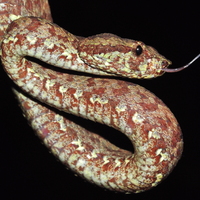Papers by Utkarsha Chavan

Journal of Threatened Taxa
In this paper, we report monitoring of a resident population of Mugger Crocodile Crocodylus palus... more In this paper, we report monitoring of a resident population of Mugger Crocodile Crocodylus palustris (Lesson, 1831) along a stretch of 3.5 km of the river Savitri on the outskirts of Mahad town of Raigad District in Maharashtra, on monthly basis from 2014 to 2021. This river is increasingly becoming a sink of anthropogenic wastes emerging from adjacent settlements impacting its habitat value, and puts the reptile side by side with humans and human-wastes that could be a cause of rising incidents of crocodile mortality in the recent times here, as also reported from elsewhere. Savitri River has been a fishing ground for local indigenous communities, who also use the river bank for washing clothes and utensils, and for swimming. Such proximity between people and crocodiles creates a potential for negative interaction. This long term study monitored the Mugger population trends for the last eight years at four transect stretches along the river. Counts are suggestive of a health...

Journal of Threatened Taxa
As far as animal cognition is concerned, in comparison with mammals and birds, reptiles have been... more As far as animal cognition is concerned, in comparison with mammals and birds, reptiles have been underestimated and research in reptilian cognition hasn’t progressed much due to this bias. Though crocodiles are generally stereotyped as lethargic and lacking social interactions except for territoriality, parental care and prey ambush, they demonstrate discrete behavioural repertoire in a variety of situations suggestive of refined cognition. The observations presented here were recorded during a long-term study on Muggers Crocodylus palustris of Savitri River in Maharashtra, and indicate social behaviour of remarkable acuity among Muggers to optimize foraging, which clearly hints at cooperative fishing. Also, on many occasions here, the Muggers were seen to have sticks on their snouts or lay still in the vicinity of floating twigs presumably to lure birds that desperately scouted for nesting material; though only on one occasion the unsuspecting bird was ambushed successfully. Fligh...






Uploads
Papers by Utkarsha Chavan